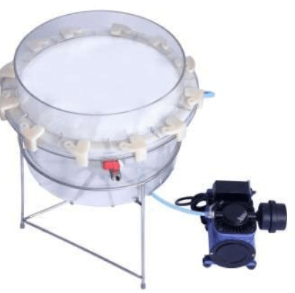The Role of Process Piping in the Semiconductor Industry
The semiconductor industry is one of the most critical sectors in the global economy, driving innovation in technology, electronics, and communications. Behind the seamless performance of semiconductor fabrication processes lies an intricate network of piping systems that ensure the smooth flow of gases, chemicals, and other materials essential for semiconductor manufacturing. This blog explores the vital role of process piping, semiconductor piping, and semiconductor process piping in the development of modern semiconductor devices.
Understanding Process Piping
What is Process Piping?
Process piping refers to the system of pipes and valves used to transport various materials, such as liquids, gases, and chemicals, within an industrial facility. Unlike plumbing, which deals with water distribution and waste removal, process piping is specialized for industries like chemical processing, oil and gas, pharmaceuticals, and semiconductor manufacturing. These systems are engineered to meet specific process requirements, ensuring safety, efficiency, and reliability.
In semiconductor manufacturing, process piping is crucial for transporting ultra-pure materials that are used in the production of silicon wafers and other microelectronic components. The precise control of these materials is critical for maintaining the stringent quality standards required in the semiconductor industry.
Key Components of Process Piping
Process piping systems include a variety of components designed to transport, control, and monitor the flow of materials:
- Pipes: Made from high-grade materials such as stainless steel or specialized alloys to resist corrosion and contamination.
- Valves: Used to control the flow of materials within the piping system.
- Pumps: Responsible for moving liquids and gases through the pipes.
- Fittings: Connect different sections of the piping system and provide flexibility for system expansion or maintenance.
- Instrumentation: Sensors, gauges, and control systems that monitor pressure, temperature, and flow rates.
These components must be carefully selected and installed to meet the specific needs of semiconductor manufacturing processes.
Semiconductor Piping: The Lifeblood of Semiconductor Fabrication
The Importance of Semiconductor Piping
Semiconductor piping refers to the specialized piping systems used in semiconductor fabrication plants (also known as fabs) to transport ultra-pure chemicals, gases, and water. These materials are essential for the production of silicon wafers, which serve as the foundation for semiconductor devices like microchips, processors, and memory modules.
The quality and purity of materials transported through semiconductor piping systems directly impact the performance and reliability of the final products. Contaminants in the materials can cause defects in the microchips, leading to failures or reduced efficiency. As a result, semiconductor piping systems must be designed and maintained with extreme precision to ensure that only ultra-pure materials are used in the manufacturing process.
Materials Used in Semiconductor Piping
The materials used in semiconductor piping systems must be resistant to corrosion, contamination, and chemical reactions. Common materials include:
- Stainless Steel: Widely used for its corrosion resistance and strength.
- Polytetrafluoroethylene (PTFE): A non-reactive material that provides excellent chemical resistance, commonly used in semiconductor piping.
- Polyvinylidene Fluoride (PVDF): A high-performance thermoplastic with excellent chemical resistance and low permeability.
- PFA (Perfluoroalkoxy Alkane): Known for its high purity and ability to withstand extreme temperatures and corrosive environments.
Each material is chosen based on its ability to maintain the purity of the transported materials and withstand the harsh conditions within a semiconductor fab.
Challenges in Semiconductor Piping
The semiconductor manufacturing process requires ultra-high purity (UHP) piping systems that meet strict industry standards. Some of the challenges faced in semiconductor piping include:
- Contamination Control: Even the smallest particles or impurities can compromise the performance of semiconductor devices. Therefore, semiconductor piping systems must be designed to minimize contamination risks.
- Chemical Compatibility: The materials used in semiconductor piping must be compatible with a wide range of chemicals used in the fabrication process. This requires careful selection of piping materials to prevent chemical reactions or degradation.
- Leak Prevention: Any leaks in the piping system can introduce contaminants or disrupt the manufacturing process. Semiconductor piping systems are designed to be leak-proof, with rigorous testing and inspection procedures to ensure reliability.
Semiconductor Process Piping: Precision and Efficiency in Fabrication
What is Semiconductor Process Piping?
Semiconductor process piping refers to the piping systems that transport ultra-pure gases, chemicals, and water used in the various stages of semiconductor manufacturing. These systems are critical for processes such as chemical vapor deposition (CVD), etching, and wafer cleaning, all of which require precise control of material flow.
The semiconductor process piping system is designed to ensure that the materials delivered to each process stage are of the highest purity and consistency. This is essential for maintaining the integrity of the silicon wafers and ensuring the performance of the final semiconductor devices.
Key Functions of Semiconductor Process Piping
Semiconductor process piping plays several key roles in the manufacturing process:
- Delivery of Ultra-Pure Materials: Semiconductor fabrication requires ultra-pure gases, chemicals, and water to prevent defects in the microchips. Process piping systems are responsible for delivering these materials to the point of use with minimal contamination.
- Pressure and Flow Control: Precise control of pressure and flow rates is essential for maintaining consistency in the manufacturing process. Semiconductor process piping systems are equipped with advanced instrumentation to monitor and adjust these parameters in real time.
- Temperature Regulation: Some semiconductor processes require materials to be delivered at specific temperatures. Process piping systems are designed with insulation and heating elements to maintain the required temperature during transport.
- Waste Removal: After the materials have been used in the manufacturing process, semiconductor process piping systems are responsible for removing waste materials, which must be handled and disposed of safely to prevent contamination.
Industry Standards and Regulations
Due to the sensitive nature of semiconductor manufacturing, semiconductor process piping systems must adhere to strict industry standards and regulations. These include:
- ISO 14644: Standards for cleanroom environments, which are essential for maintaining the purity of materials transported through semiconductor process piping.
- SEMI Standards: The Semiconductor Equipment and Materials International (SEMI) organization sets standards for semiconductor manufacturing equipment and materials, including process piping systems.
- ANSI/ISA-88: Standards for batch control in process industries, which are relevant for semiconductor process piping systems used in batch fabrication processes.
Compliance with these standards ensures that semiconductor process piping systems meet the necessary purity, safety, and efficiency requirements for semiconductor manufacturing.
The Future of Process Piping in Semiconductor Manufacturing
As the demand for smaller, faster, and more powerful semiconductor devices continues to grow, the role of process piping in the semiconductor industry will become even more critical. Advances in semiconductor technology, such as the development of 3D transistors and nanometer-scale chips, will require even greater precision and control in the manufacturing process.
In response to these challenges, innovations in process piping are expected to focus on:
- Improved Contamination Control: New materials and coatings will be developed to further reduce the risk of contamination in semiconductor piping systems.
- Automation and Monitoring: Advanced sensors and automation technologies will allow for real-time monitoring and control of semiconductor process piping systems, improving efficiency and reducing the risk of errors.
- Sustainability: As the semiconductor industry seeks to reduce its environmental impact, process piping systems will need to be designed with sustainability in mind, incorporating energy-efficient designs and materials that minimize waste.
Conclusion
Process piping, semiconductor piping, and semiconductor process piping are the unsung heroes of the semiconductor manufacturing industry. These highly specialized systems ensure the smooth and efficient transport of ultra-pure materials, enabling the production of the advanced microchips and semiconductor devices that power modern technology. As semiconductor manufacturing continues to evolve, the role of process piping will only become more critical, driving innovation and ensuring the industry’s continued growth and success.












